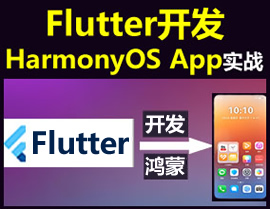// xxx.ets
@Entry
@Component
struct ListExample {
private arr: number[] = [0, 1, 2, 3, 4, 5, 6, 7, 8, 9]
@State totalScrollOffset: number = 0;
private tabArray: number[] = [0, 1, 2]
@State focusIndex: number = 0;
private controller: TabsController = new TabsController()
@Builder
myScroll() {
Scroll() {
Row() {
ForEach(this.tabArray, (item: number, index: number) => {
Row({ space: 20 }) {
Text('页签' + item)
.fontWeight(index === this.focusIndex ? FontWeight.Bold : FontWeight.Normal)
}
.padding({ left: '10fp', right: '10fp' })
.onClick(() => {
this.controller.changeIndex(index)
this.focusIndex = index
})
})
}
}
.align(Alignment.Start)
.scrollable(ScrollDirection.Horizontal)
.scrollBar(BarState.Off)
.width('100%')
}
build() {
Column() {
List({ space: 20, initialIndex: 0 }) {
// ForEach(this.arr, (item: number) => {
ListItem() {
Text('')
.width('100%')
.height(100)
.fontSize(16)
.textAlign(TextAlign.Center)
.borderRadius(10)
.backgroundColor(Color.Red)
}
// }, (item: string) => item)
ListItemGroup({ header: this.myScroll() }) {
ListItem() {
//tabs组件把tabbar隐藏
Tabs({ barPosition: BarPosition.Start, controller: this.controller }) {
ForEach(this.tabArray, (item: number, index: number) => {
TabContent() {
List({ space: 20, initialIndex: 0 }) {
ForEach(this.arr, (item: number) => {
ListItem() {
Text('' + item)
.width('100%').height(100).fontSize(16)
.textAlign(TextAlign.Center).borderRadius(10).backgroundColor(0xFFFFFF)
}
}, (item: string) => item)
}
.listDirection(Axis.Vertical) // 排列方向
.scrollBar(BarState.Off)
.friction(0.6)
.divider({ strokeWidth: 2, color: 0xFFFFFF, startMargin: 20, endMargin: 20 }) // 每行之间的分界线
.edgeEffect(EdgeEffect.Spring) // 边缘效果设置为Spring
.nestedScroll({//规避滚动冲突
scrollForward:NestedScrollMode.PARENT_FIRST,
scrollBackward:NestedScrollMode.SELF_FIRST
})
}
})
}
.barHeight(20)
}
}
}
.sticky(StickyStyle.Header)
.listDirection(Axis.Vertical) // 排列方向
.scrollBar(BarState.Off)
.friction(0.6)
.divider({ strokeWidth: 2, color: 0xFFFFFF, startMargin: 20, endMargin: 20 }) // 每行之间的分界线
.edgeEffect(EdgeEffect.None)
.width('90%')
}
.width('100%')
.height('100%')
.backgroundColor(0xDCDCDC)
.padding({ top: 5 })
}
}









